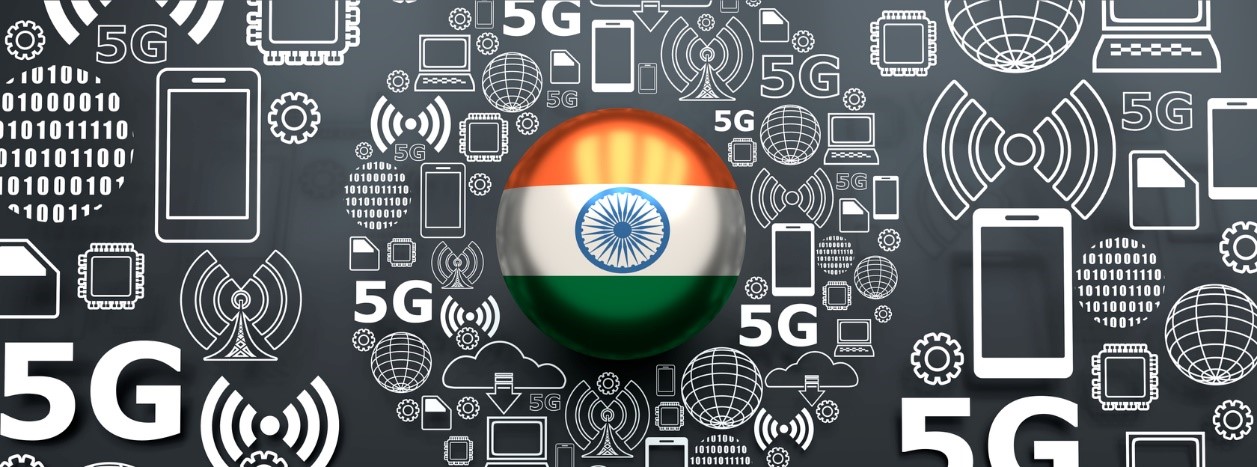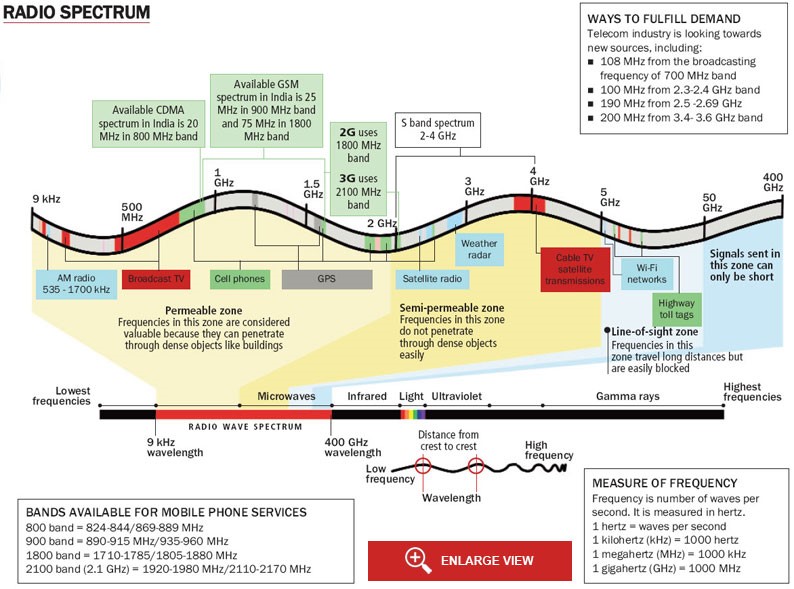Description

Disclaimer: Copyright infringement not intended.
Context
- The government plans to auction a total of 10,523.15 MHz of spectrum across various bands.
- This includes spectrum in the following bands: 800 MHz, 900 MHz, 1800 MHz, 2100 MHz, 2300 MHz, 2500 MHz, 3300 MHz, and 26 GHz.
Spectrum Auctions:
- Introduction: Communication devices like cellphones and wireline telephones rely on signals transmitted through airwaves, or radio waves, at designated frequencies to avoid interference.
- Need for Spectrum Auctions: As the number of cellphone, wireline telephone, and internet users grows, there's a demand for more spectrum space to accommodate the increasing volume of signals. The Union government, which owns all publicly available assets within the country's boundaries, including airwaves, auctions spectrum to companies willing to invest in the infrastructure needed to transmit these signals.
- Process: The Department of Telecom (Ministry of Communications) oversees the auction process, facilitating the sale of airwaves, known as spectrum, to interested companies. Spectrum is subdivided into bands with varying frequencies to accommodate different types of communication services.
- Validity Period: Airwaves sold through auctions come with a predetermined validity period, typically set at 20 years. After the validity period lapses, companies must renew their spectrum licenses to continue using the allocated airwaves.
- Conclusion: Spectrum auctions conducted by the government play a vital role in meeting the increasing demand for communication services. By selling airwaves to companies, the government ensures efficient utilization of spectrum resources while promoting investments in telecommunications infrastructure.

Frequency Bands:
- 800 MHz: Used for mobile communication, including 2G, 3G, and 4G services.
- 900 MHz: Primarily allocated for 2G and 3G mobile services.
- 1800 MHz: Utilized for 4G LTE services.
- 2100 MHz: Allocated for 3G and 4G services, including data transmission.
- 2300 MHz: Designated for broadband wireless access (BWA) services like 4G.
- 2500 MHz: Used for high-speed wireless broadband services.
- 3300 MHz: Identified for 5G services and future technologies.
- 26 GHz: Allocated for millimeter-wave spectrum, suitable for high-capacity applications like 5G.

Upcoming Spectrum Allocation:
The government of India is set to auction various spectrum bands to telecom operators, facilitating the expansion of communication services across the country.
Auction Details:
- The spectrum to be auctioned includes frequencies in the 800, 900, 1800, 2100, 2300, 2500, 3300 MHz, and 26 GHz bands.
- Additionally, spectrum held by certain companies undergoing insolvency proceedings and those expiring in 2024 will also be auctioned.
- The validity of the spectrum purchased in this auction will be 20 years.
Timeline and Process:
- The auction timeline is yet to be announced, but it is expected to take place in the coming months.
- Typically, there is a 9-10 week window between the release of the notice inviting applications (NIA) and the actual auction.
- The Department of Telecommunications (DoT) will issue the NIA, outlining the auction rules and processes, followed by the commencement of the auction.
Fresh Spectrum Allotment:
- Bharti Airtel and Vodafone Idea (Vi) will receive fresh spectrum allotment to ensure uninterrupted telecom services until the auction is conducted.
- Both telcos can continue to use the spectrum by paying the price determined in the last auction until the new spectrum is allocated.
- Airtel's spectrum renewal is due in six circles, while Vi's license expires in specific circles.
Expected Demand and Revenue:
- The Department of Telecommunications (DoT) anticipates a subdued response from telecom operators, with demand primarily for spectrum up for renewal in certain circles.
- The government expects to generate revenue of around Rs 10,000 crore from the upcoming auction.
Previous Auction and Utilization:
- In the last auction held in 2022, Reliance Jio, Bharti Airtel, and Vi acquired spectrum, with Jio being the largest spender.
- However, analysts suggest that the spectrum acquired in 2022 remains largely unutilized, influencing the anticipated demand in the upcoming auction.
Spectrum Reforms:
- The government will establish a committee of secretaries to consider re-farming existing spectrum usage to meet future needs.
- This committee, chaired by the cabinet secretary, will finalize plans to repurpose allotted spectrum in specific bands to optimize spectrum utilization as technologies evolve.
Spectrum Allocation for Special Purposes:
- Additional spectrum in the 700 MHz band will be allocated for Indian Railways' Kavach anti-collision technology.
- The spectrum will also be reserved for the National Capital Region Transport Corporation to enhance safety and operations in transportation systems.

Conclusion:
- The upcoming spectrum auction and related reforms aim to meet the growing demand for communication services while ensuring efficient spectrum utilization and enhancing safety measures in critical infrastructure.
|
PRACTICE QUESTION
Q. Which of the following spectrum bands is used for high-speed wireless broadband services?
a) 2300 MHz
b) 2500 MHz
c) 3300 MHz
d) 26 GHz
Correct answer: b) 2500 MHz
Explanation: The 2500 MHz spectrum band is designated for high-speed wireless broadband services.
|

















